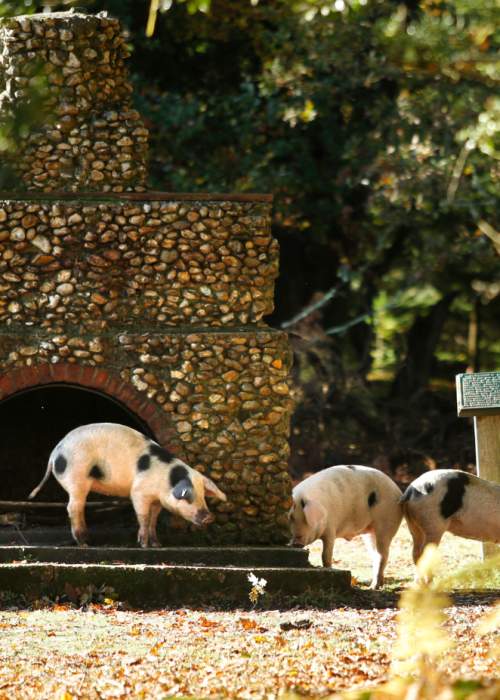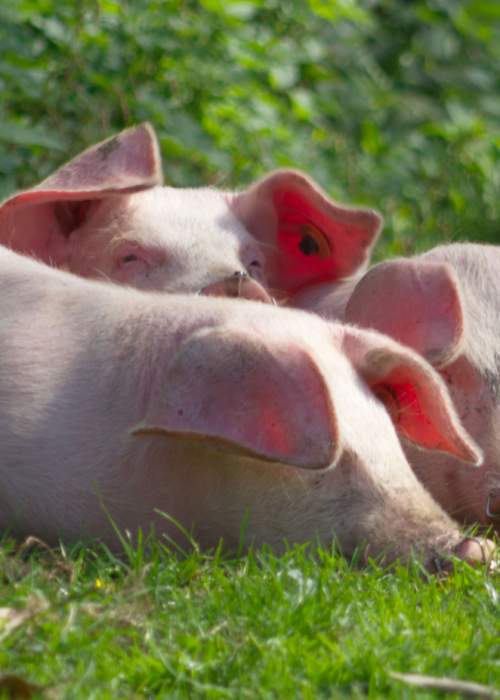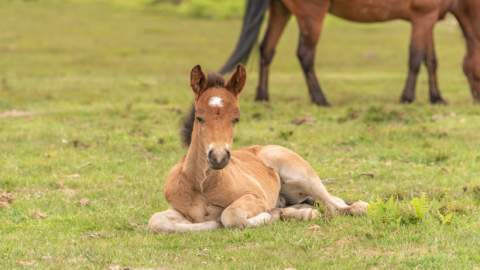New Forest Pigs and Pannage
When is Pannage season in the New Forest? This year, Pannage will take place from Monday 16 September to Friday 22 November 2024.
During the autumn months, it’s not an uncommon sight to see pigs roaming the forest floor. The reason for this is one of pannage!
Pannage is the practice of releasing domestic pigs into a forest (also known as ‘Common of mast’), and goes all the way back to the time of William the Conqueror, who founded The New Forest in 1079.
The pigs are released onto the forest to eat fallen acorns, beechmast, chestnuts and other nuts; green acorns in particular are poisonous to the New Forest ponies and cattle which roam the forest the majority of the year.
Up to 600 pigs and piglets will work their way through the forest eating the acorns and nuts from the forest floor. It is the only time of year that the pigs are allowed to ‘roam’ the open forest, the rest of the time they are kept in their smallholdings by the commoners. In the 19th century the number of pigs released for pannage was as high as 6,000.
Pannage is no longer carried out in many areas of the country but can still be observed every year here in the New Forest National Park. Pannage lasts for a minimum of 60 days and is vital because acorns are poisonous in large quantities to cattle and ponies and can lead to cholic. Pigs however are believed to spit out the toxic skins and enjoy eating the acorns.
You can usually find the pigs roaming the forest floors from around the third week in September, or whenever the acorns begin to drop from the beautiful oak and beech trees. The exact Pannage dates are decided by the New Forest Verderers and the Forestry Commission based on seasonal variations. During times of exceptional acorn falls, the pannage season is usually extended by the Verderers.
New Forest pigs must also be fitted with a ring through their nose which still enables them to forage through leaf litter and surface vegetation but stops them from rooting into the ground with their snouts causing damage to the Forest. Some of the different breeds of pig that you can find out on the New Forest include: Tamworth, Gloucestershire Old Spot, the British Saddleback and the Wessex Saddleback. There isn’t a specific breed of New Forest pig.
During the pannage season also keep a look out for the local artisan bakeries, farm shops and shops that sell piggy-shaped biscuits to celebrate this most ancient of New Forest practices. After pannage, some local butchers sell special pannage pork, such as The Farmers Butcher, who get their pork from Storms Farm near Cadnam in the New Forest.
Where can I see the pigs roaming?
Pannage in the New Forest is a beautiful and quite mesmerising sight; so why not take your camera and enjoy one of the walking routes in the Forest and take some fantastic photographs? It may be a bit of luck needed to spot them as they don’t tend to congregate in one particular area.
It can sometimes be tricky to spot the pigs and at the end of pannage season it can be a bit of a job for the commoners to find their animals and take them off the open forest! They often rely on the locals and their in-depth knowledge of the forest to find them again.
Occasionally, you may find pigs on the forest outside of pannage season. Special dispensation is given to breeding sows (female pigs) that they are allowed onto the forest so long as they aren’t causing a nuisance. However, they have to be returned to their holding overnight.
Check out this cute video of some Pannage Pigs and count how many you can see : https://youtu.be/7K8Q_hzfCCI
Caring for the pigs & other wildlife
The New Forest National Park is a wonderful place to visit and you can help it stay that way by being a Forest friendly visitor and following the New Forest Code.
For their safety and your own please don't touch the animals - although owned and cared for by local people called commoners, they are unpredictable and best treated as wild. Please keep your distance, don’t feed or pet them; there is plenty of natural food and it’s best that they don’t come to rely on human attention. Animals here may look friendly but they can bite.




